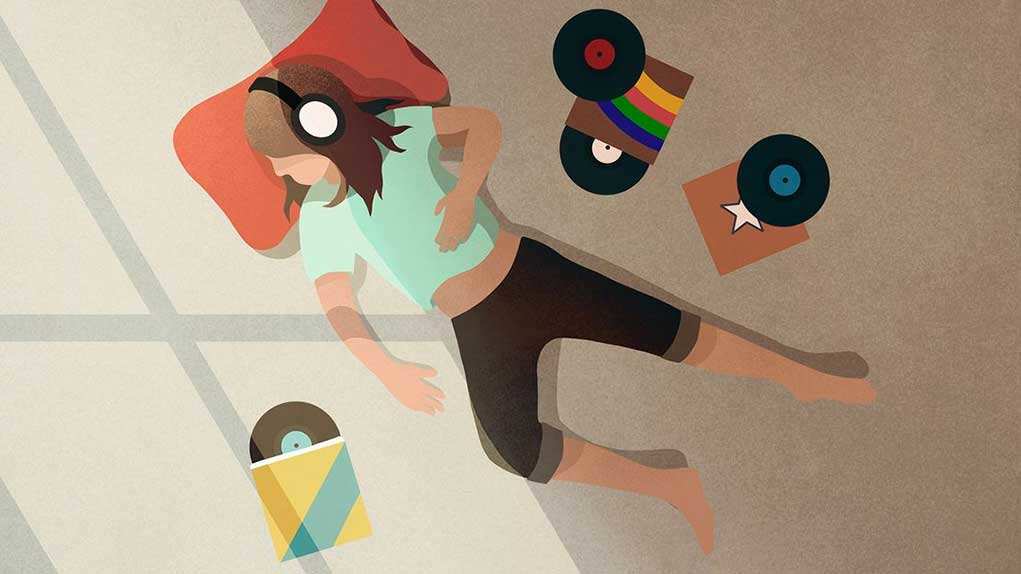
Naps aren’t only for toddlers. Approximately 1 in 3 American adults nap, according to previous Pew Research Center data.
Naps come in all shapes and sizes. “Some people take restorative daytime naps in order to compensate for insufficient nighttime sleep,” says Shanon Makekau, MD, chief of pulmonology and sleep medicine director at Kaiser Permanente in Honolulu. “Others may take ‘prophylactic’ naps to prepare for an overnight shift.”
And then there’s the power nap.
“A power nap is a nap that’s short — less than 30 minutes long,” says Safia Khan, MD, a specialist in sleep disorders and an assistant professor in the department of family and community medicine and the department of neurology at UT Southwestern Medical Center in Dallas.
It provides the restorative benefits of sleep without adversely affecting one’s ability to fall asleep at night, Dr. Makekau adds.
What Counts as a Power Nap?
Some experts say the power nap should be even shorter — 20 minutes max. But all agree it shouldn’t exceed 30 minutes. That’s because the body enters a deep sleep around that time, and waking up from a deep sleep can lead to grogginess, according to the Sleep Foundation.
This state of grogginess or drowsiness is also called “sleep inertia.” It’s when your body feels like you need to sleep more because your brain has already started to get into a deeper state of sleep, Dr. Khan explains.
Sticking to the shorter time frame keeps the body from dealing with sleep inertia so you wake up feeling recovered rather than sleepy. “With a power nap, you stay in the lighter stages of sleep,” Khan says. “When you’ve been sleeping longer than 30 minutes, it’s more difficult to wake up and you wake up feeling groggy versus when waking up from lighter sleep.”
Power naps are the most beneficial type of nap for most adults, according to the American Sleep Association.
What Are the Benefits of a Power Nap?
The main benefit of a power nap is to help you feel refreshed, so you feel more awake through the rest of the day. “When you take a power nap, it energizes you and makes you more alert for the next four to six hours,” Khan says. “You feel like you can get a lot more accomplished.”
According to Mayo Clinic, napping can help you feel relaxed, reduce fatigue, increase alertness, and improve your mood as well as your performance, such as by increasing your reaction time and memory. “Power naps can help people with jobs requiring high vigilance (for example, drivers and pilots) to recharge, thus reducing the risk of accidents and errors due to drowsiness,” Makekau says.
Napping can also boost the immune system and reduce stress. A small study published in February 2015 in The Journal of Clinical Endocrinology and Metabolism found short, 30-minute naps had stress relieving and immune benefits for a group of healthy young adult men.
And if you needed another excuse for a midday break: Naps may keep your heart healthy. A study published in December 2019 in Heart found that participants who napped once or twice a week had a lower risk of experiencing a cardiovascular event.
Just remember that 30-minute limit to ensure the nap doesn’t interfere with nighttime sleep, Khan says. “It’s easier to wake up from a power nap, and it does not significantly affect your nighttime sleep,” she says. “A longer nap will affect your ability to fall asleep at night.”
Does a Caffeine Nap Actually Work?
Some people take the power nap to the next level by consuming coffee (or other sources of caffeine) immediately before falling asleep.
“By the time coffee gets absorbed into the system, the effect of the caffeine will start working and will help wake you up,” Khan says.
A study published in the September–October 2020 issue of Chronobiology International had participants drink 200 milligrams of caffeine right before a 30-minute nap. (For reference, that’s about two cups of coffee, according to Mayo Clinic.) Those individuals tested higher on careful attention and fatigue in the 45 minutes after waking up from the nap compared with those who did not consume caffeine before sleeping.
Whether or not it’ll work for you depends on how you respond to caffeine. “There are some people who get wired immediately as they drink their coffee,” Khan says.
If you decide to give it a try, do it in the early afternoon. “We don’t recommend drinking coffee past 3 or 4 p.m. because it can disrupt your nighttime sleep,” Khan says.
Who Are Power Naps Best for and How Do I Know I’m Doing It Right?
If you get the recommended seven to nine hours of sleep at night (per guidelines from National Sleep Foundation published in March 2015 in Sleep Health), wake up feeling rested, and have plenty of energy throughout the day, you probably don’t need to worry about power napping. But, if you tend to feel drowsy in the afternoon or you’ve had a poor night’s sleep, a power nap could indeed be beneficial, Khan says.
Power naps may be especially helpful for shift workers, especially those who need to avoid drowsiness for safety reasons, such as truck drivers or doctors prepping for surgery. “This reduces risks of errors in judgment,” Khan says.
Khan says it’s okay to power nap regularly. “However, if you need to take a power nap daily, then you may benefit from increasing total sleep time at night,” she says.
Here are a few tips from the Sleep Foundation on how to get the most out of your power nap:
- Don’t nap too close to nighttime sleep. A good rule of thumb is to nap at the midpoint between the time you wake up and the time you go to bed.
- Set an alarm for 10 to 20 minutes to ensure you wake up feeling alert instead of groggy.
- Find the right spot to rest. The best sleep environment for napping is the same one for nighttime: You want a cool, dark, quiet, and comfortable place. Your bedroom is ideal, and earplugs and an eye mask may help, Makekau says.
Power naps aren’t for everyone. You may not be able to make it work schedule-wise or you may be the type who wakes up feeling disoriented or even more tired than you were before, regardless of the duration of the nap.
But, Khan adds that she’s personally a big fan. “Most people do benefit from taking a power nap,” she says.
Important Notice: This article was originally published at www.everydayhealth.com by Moira Lawler where all credits are due. Medically reviewed by Jason Paul Chua, MD, Ph.D.
Disclaimer
The watching, interacting, and participation of any kind with anything on this page does not constitute or initiate a doctor-patient relationship with Dr. Farrah®. None of the statements here have been evaluated by the Food and Drug Administration (FDA). The products of Dr. Farrah® are not intended to diagnose, treat, cure, or prevent any disease. The information being provided should only be considered for education and entertainment purposes only. If you feel that anything you see or hear may be of value to you on this page or on any other medium of any kind associated with, showing, or quoting anything relating to Dr. Farrah® in any way at any time, you are encouraged to and agree to consult with a licensed healthcare professional in your area to discuss it. If you feel that you’re having a healthcare emergency, seek medical attention immediately. The views expressed here are simply either the views and opinions of Dr. Farrah® or others appearing and are protected under the first amendment.
Dr. Farrah® is a highly experienced Licensed Medical Doctor certified in evidence-based clinical nutrition, not some enthusiast, formulator, or medium promoting the wild and unrestrained use of nutrition products for health issues without clinical experience and scientific evidence of therapeutic benefit. Dr. Farrah® has personally and keenly studied everything she recommends, and more importantly, she’s closely observed the reactions and results in a clinical setting countless times over the course of her career involving the treatment of over 150,000 patients.
Dr. Farrah® promotes evidence-based natural approaches to health, which means integrating her individual scientific and clinical expertise with the best available external clinical evidence from systematic research. By individual clinical expertise, I refer to the proficiency and judgment that individual clinicians acquire through clinical experience and clinical practice.
Dr. Farrah® does not make any representation or warranties with respect to the accuracy, applicability, fitness, or completeness of any multimedia content provided. Dr. Farrah® does not warrant the performance, effectiveness, or applicability of any sites listed, linked, or referenced to, in, or by any multimedia content.
To be clear, the multimedia content is not intended to be a substitute for professional medical advice, diagnosis, or treatment. Always seek the advice of your physician or other qualified health providers with any questions you may have regarding a medical condition. Never disregard professional medical advice or delay in seeking it because of something you have read or seen in any website, video, image, or media of any kind. Dr. Farrah® hereby disclaims any and all liability to any party for any direct, indirect, implied, punitive, special, incidental, or other consequential damages arising directly or indirectly from any use of the content, which is provided as is, and without warranties.








